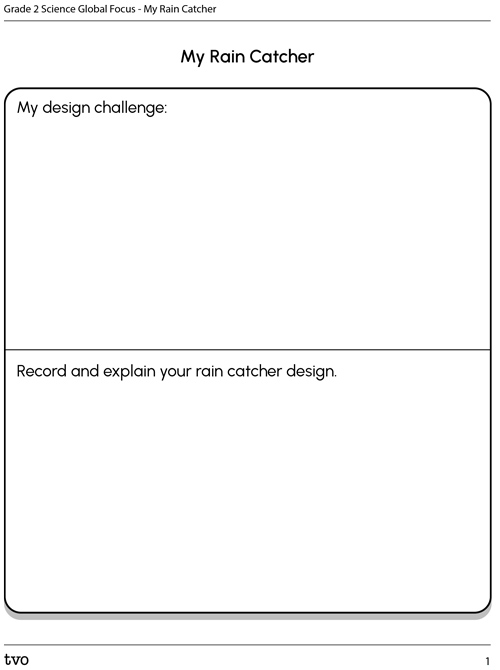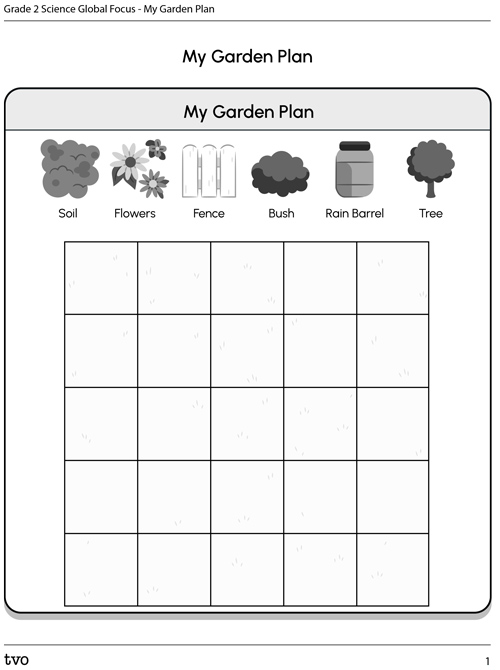Minds On
Rain gauges
Explore the following image and description of a rain gauge.
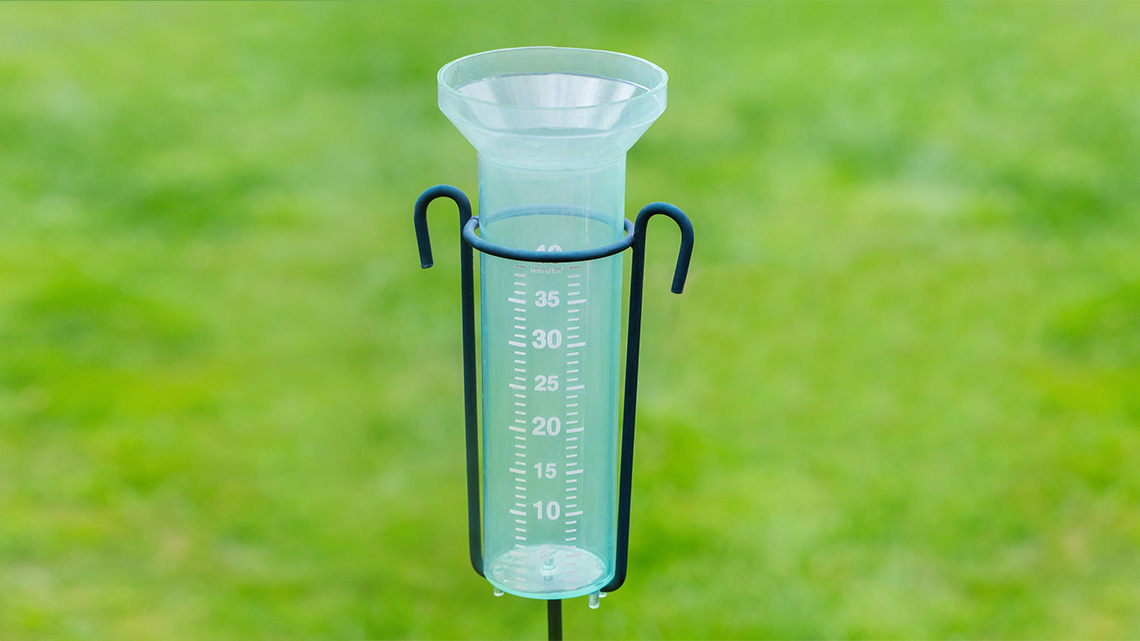
Rain gauge
A rain gauge is a tool used to measure precipitation, most often rain. There are several types, but it’s usually a container that collects rainfall. It’s marked with measurements, usually in centimetres (cm) in Canada.
How could a scientist use a rain gauge?
Record your ideas digitally, orally, or on paper.
Action
Connecting to the world
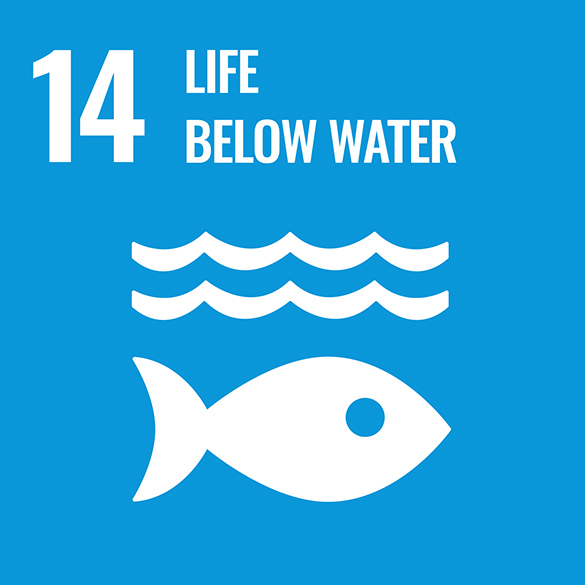
The United Nations (UN) is a group of many countries from around the world that have come together to create a better future for people and the environment. They have created 17 goals called the Sustainable Development Goals.
This learning activity is connected to Goal #14 which is called Life Below Water. This means everyone should help protect our oceans and seas.
Learning to conserve water by collecting rainwater helps to protect other bodies of water and the animals who live there.
It’s raining, it’s pouring…
Rain is one example of precipitation, along with snow, hail, and sleet.
Press ‘Precipitation’ to access its definition.
Water falls to the ground as a liquid or solid.
When the water droplets in clouds get too heavy, they fall from clouds back to the earth in the form of rain, hail, sleet, or snow.
When water is cooled down to 0 degrees C, it freezes into a solid. In its solid state, water can fall from the sky in the form of snowflakes, sleet (rain and snow mixed), or hail.
Rain is an important part of the water cycle because it refills our waterways.
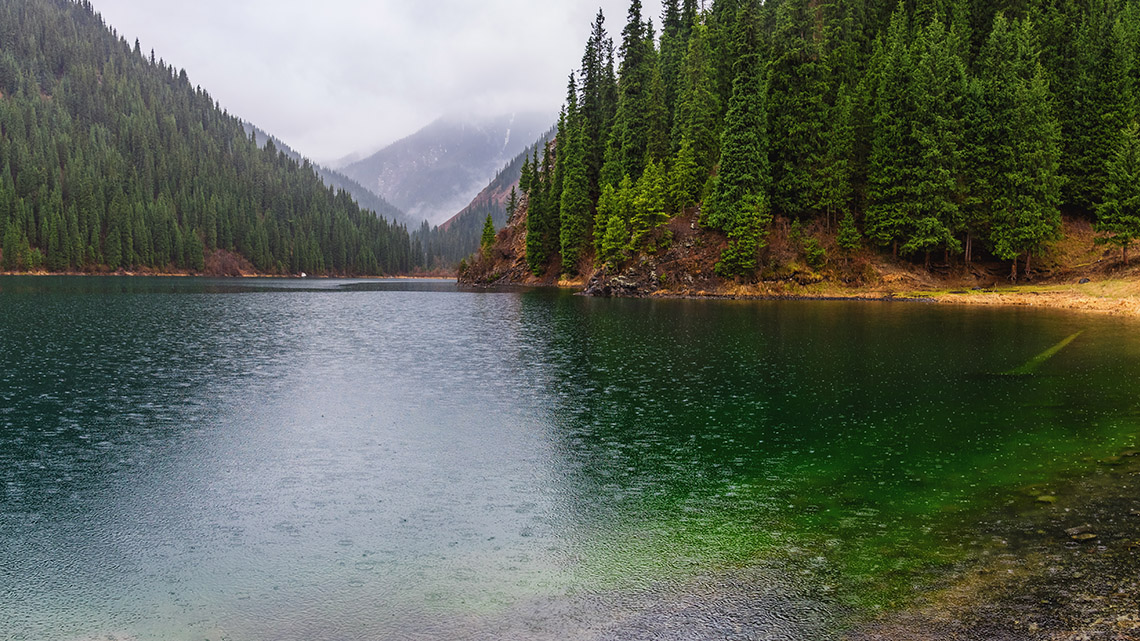
Rain also gets soaked up into the ground and feeds plants.

Using a rain gauge, scientists can measure precipitation to make predictions about different situations including floods (too much precipitation) and drought (too little precipitation).
Let’s explore what happens when there is too little rainfall.
Drought
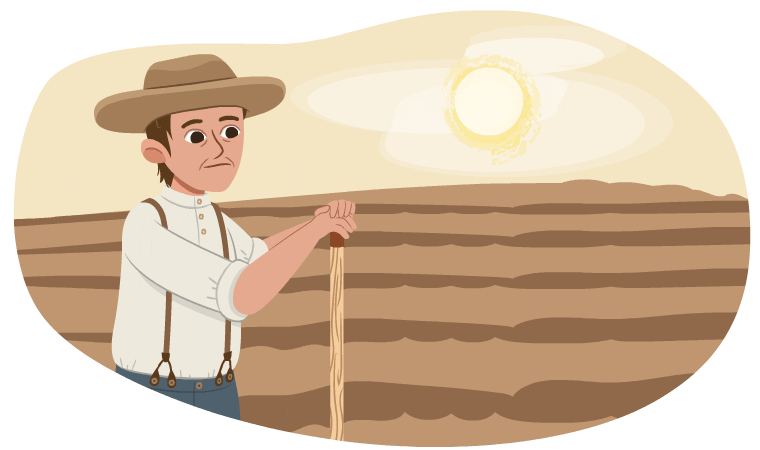
A drought is when there is very little precipitation over a long period of time.
This means that there might not be enough rain to refill water supplies such as wells, rivers, or large lakes.
Exploring ways to conserve water

Two teachers are talking. One teacher asks, "Can people protect themselves from drought?" The other teacher answers, "Yes, definitely! There are steps that people and their communities can take to protect themselves and their environment from drought."
For example, since it is especially important to conserve water during a drought, people have come up with different ways to collect rainwater.
Press ‘Conserving Water’ to explore one way to save water!
When we conserve water, we try our best to save water and use less water. Rain barrels are a common method.

A building with a rain collection system. The building has a gutter that collects rain running down the roof. The gutter leads the water into a downspout. The downspout sends the water into a rain barrel. When it rains, rain is collected into the rain barrel to be reused!
This involves installing a large barrel at the downspout of a rain gutter.
When it rains, the water falls into the rain gutter and flows through the downspout and into the rain barrel.
Water that collects in the rain barrel can be used to water a garden or lawn, wash different items including windows and cars, and fill a toilet.
Pause and Reflect
Rain barrels
Do you think it’s possible to collect water in a rain barrel without rain gutters? Why or why not?
Press ‘Possible Answer’ to check your answer!
It is possible to collect rainwater without rain gutters. If you want to use a rain barrel, you can bury it in the ground to collect water.
You may also position it in an open area away from buildings, trees, or other things that might block the water from falling inside the barrel.

Two teachers are talking. One teacher says, "Conserving water is an important way to prepare for situations like a drought. It is also a great way to use water responsibly!"
There are also parts of the world that have very little rainfall, but water is all around!
Take, for example, the capital city of Peru, Lima.
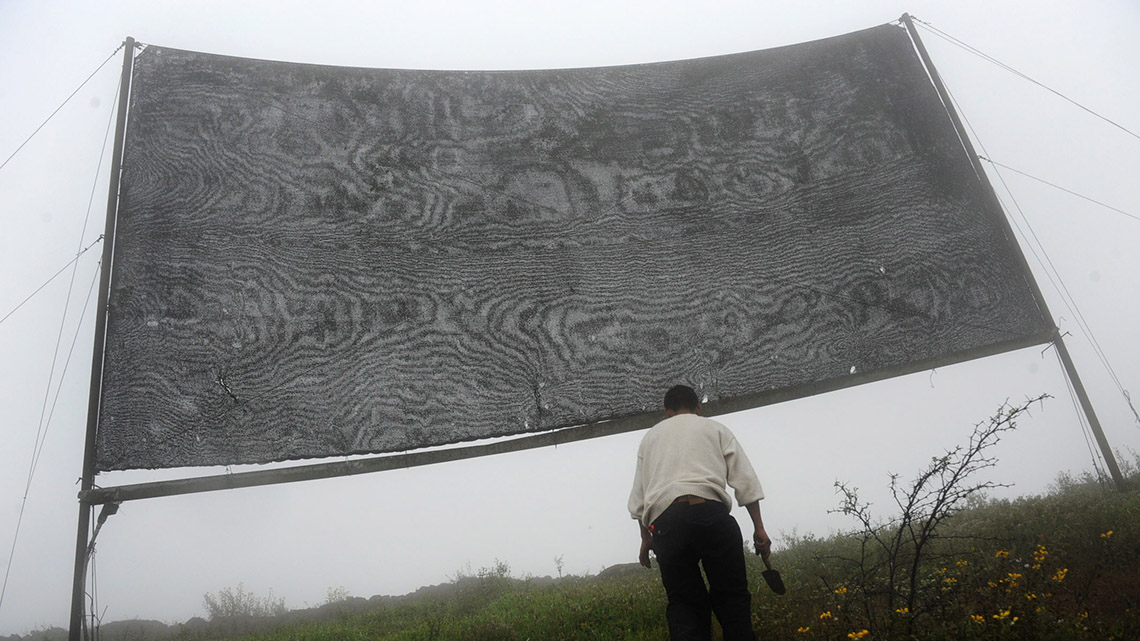
A fog net in Lima, Peru
Lima is one of the driest cities in the world. It is home to more than 10 million people and gets less than 3 cm of rain each year!
But what is interesting about Lima, is that for much of the year it is covered by a thick layer of fog.
Press ‘Definition’ to find out more about fog!
Fog is like clouds because it is made of water vapour (gas) that has cooled or condensed and turns into tiny water droplets.
However, unlike clouds, fog forms near the ground when the air is cooled by the ground or a body of water.
Communities and scientists teamed up together to test fog nets to capture the water in the air.
Fog nets are large pieces of mesh net that catch fog droplets.
The droplets then fall to the bottom of the net and into containers underneath.
Rain catchers everywhere!
Examine the following garden and its description.
Identify the items in the garden that collect water.

A garden
A garden with flowers, a wheelbarrow, a shovel, a birdbath, a bird, a fountain and a kiddie pool.
Press ‘Rain Catchers’ to find out what items can collect water in the garden!

A garden of rain catchers
A garden with flowers, a wheelbarrow, a shovel, a birdbath, a bird, a fountain and a kiddie pool. There are circles around the following rain catchers: wheelbarrow, birdbath, fountain, and kiddie pool.
Some of the items that could catch rain in the garden are :
- a wheelbarrow
- a birdbath
- a fountain
- a kiddie pool
Consider, how might someone use the water that is collected?
If possible, share your ideas with a partner.
Design time!
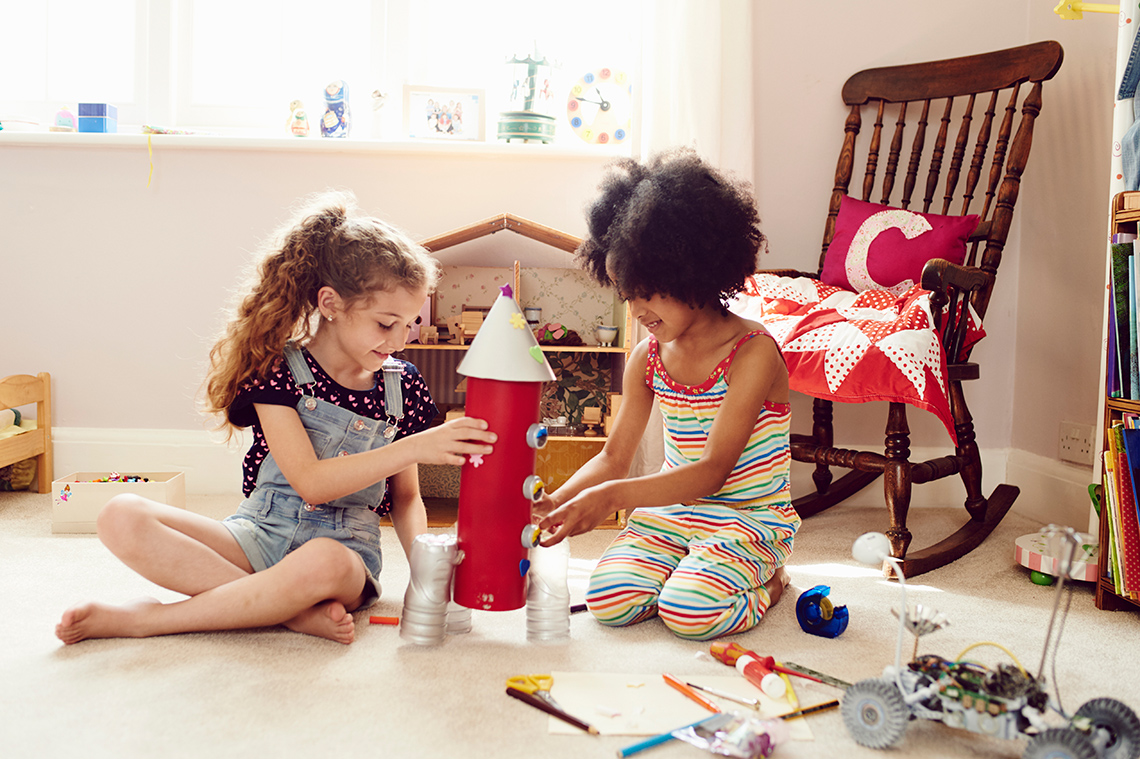
Task: Designing a rain catcher
You have been asked to design a rain catcher for a community.
Here is your design checklist:
- It needs to collect and store rainwater
- It needs to work for a garden that does not have a rain gutter
You will be using the Engineering Design Process to design your device. Now that you have a task, explore the rest of the steps of the process!
Explore some possible steps from the Engineering Design Process.

Exploring the Engineering Design Process
Brainstorming ideas

Your next step is to brainstorm possible ideas for the size and material of your device.
What size could your device be?
What materials could you use to build your device?
Press ‘Hint’ to explore a guiding idea!
What might you use as the container? Think about containers you might find in the recycling bin in your home or community.
Potential containers

milk jug

garbage bin

large soda bottles

plastic tarp

hose

spout

duct tape

funnel
Plan your design
Describe your plan!
Consider the following questions. Be sure to explain your thinking for each question.
- What size will your device be?
- What materials will you use to build your device?
Other things to consider:
- Will your device have a lid?
- Where would you put it? Where do you think is the best spot for a rain catcher?
- How often would you monitor it?
Record your ideas in the following fillable and printable My Rain Catcher document or using a method of your choice. You may choose to:
- draw it and label the important parts
- write about it
- create a video or audio recording
Pause and Reflect
Water collector

Now that you have designed your water collector what would be your next steps?
Use the Engineering Design Process you explored in the previous section to guide you.
The following stages fit together to form the Engineering Design Process. Place the stage(s) in each answer box in the correct order.
Consolidation
Putting it all together
You have designed a device that collects rainwater.
Next, plan a garden for the community that includes your rain catcher.
Press ‘Hint’ to check out some suggestions.
Try to place your rain catcher in an open area away from buildings, trees, or other things that might block the water from falling inside the barrel.
Describe your plan for your garden and where you might place your rain catcher.
Record your ideas using a method of your choice or the following fillable and printable My Garden Plan document.
Reflection
How do you feel about what you have learned in this activity? Which of the next four sentences best matches how you are feeling about your learning? Press the button that is beside this sentence.
I feel…
Now, record your ideas about your feelings using a voice recorder, speech-to-text, or writing tool.



